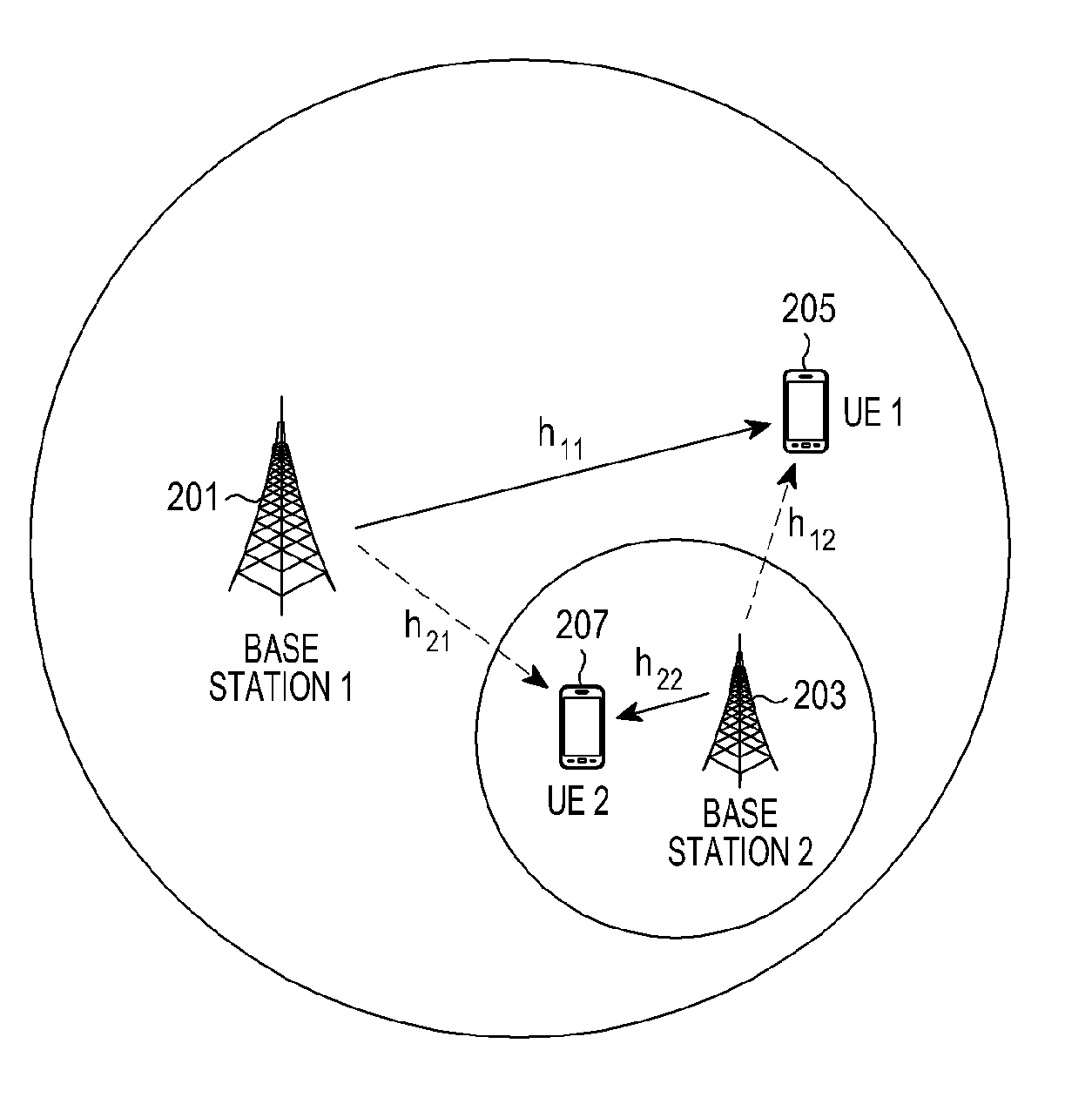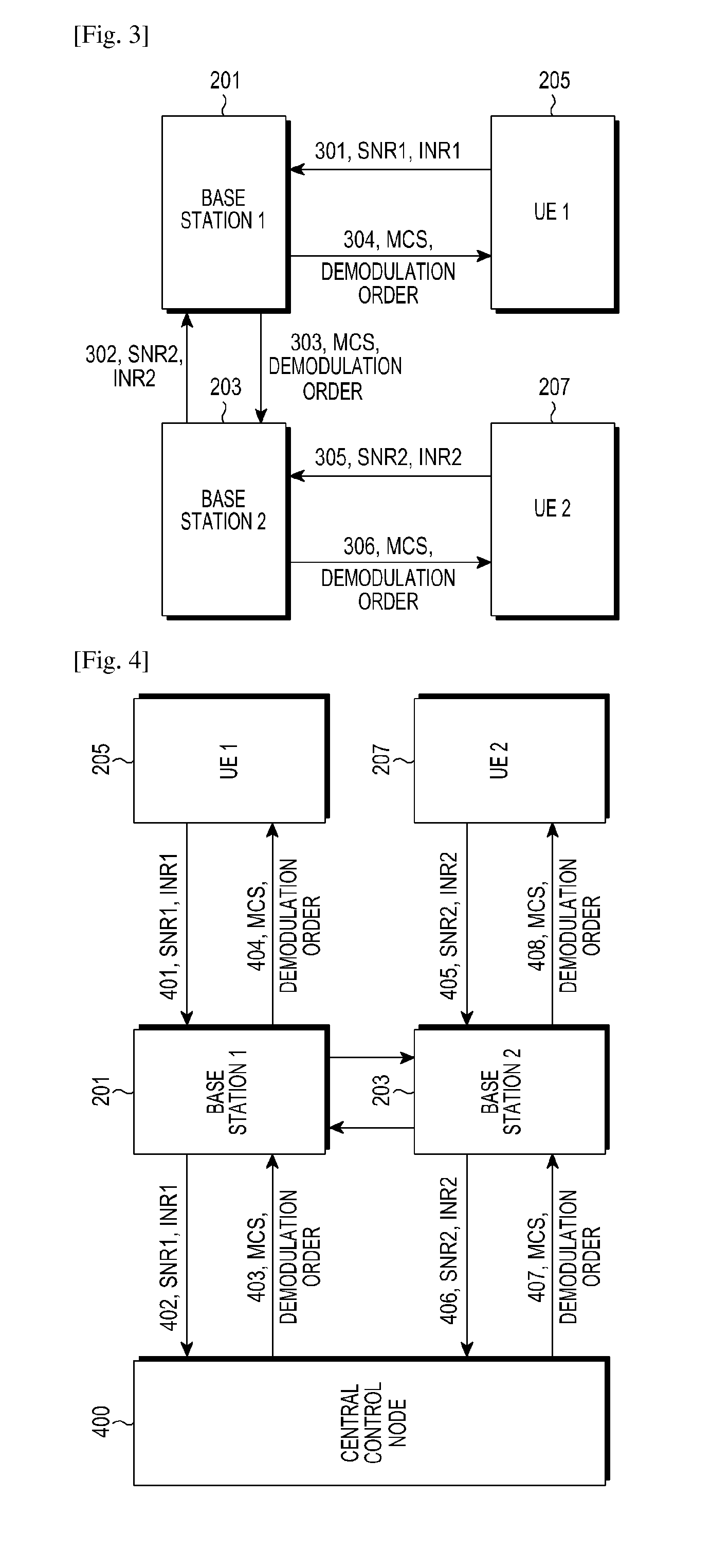Interference cancellation method, system, device and ue
a technology of interference cancellation and system, applied in the field of interference cancellation techniques in wireless communications, can solve the problems of poor continuous splitting potential, serious inter-cell interference, and uneven distribution of users in space, and achieve the effects of improving the throughput of cellular networks, and facilitating demodulation and cancellation
- Summary
- Abstract
- Description
- Claims
- Application Information
AI Technical Summary
Benefits of technology
Problems solved by technology
Method used
Image
Examples
first example
The First Example
[0040]FIG. 2 is a schematic diagram illustrating system environment according to the first example of the present application.
[0041]System environment of the first example of the present application is shown in FIG. 2. A macro base station BS1(201) and a micro base station BS2(203) are deployed in a circular region. The two base stations are connected to each other and interact information via a backbone network. A central control node (not shown) may be set in the macro base station BS1(201).
[0042]The central control node selects a UE, i.e. UE1(205), from a macro cell served by the macro base station BS1(201), and selects another UE, i.e. UE2(207), from a micro cell served by the micro base station BS2(203), and takes the two selected UEs(205, 207) as a pair of associated UEs. In general, the number of UEs in a micro cell is far less than the number of UEs in a macro cell, so it is possible to determine a UE in the micro cell first, and then determine a UE in the m...
second example
The Second Example
[0069]FIG. 4 is a schematic diagram illustrating signaling interaction according to the second example of the present application.
[0070]In this example, suppose there is a stand-alone central control node(400) in the system, then BS1(201) and BS2(203) report channel measurement information, namely SNR1, INR1, SNR2 and INR2, to the central control node(400).
[0071]After calculating the MCSs and demodulation orders of the two UEs, the central control node(400) sends the calculated transmission mode information to BS1(201) and BS2(203), and then BS1(201) and BS2(203) respectively forward the transmission mode information to UE1(205) and UE2(207). In this case, the signaling interaction of the whole process is shown in FIG. 4, which includes the following.
[0072]Flow 401, UE1(205) sends the values of detected SNR and INR, namely SNR1 and INR1 to BS1(201).
[0073]Flow 405, UE2(207) sends the values of detected SNR and INR, namely SNR2 and INR2 to BS2(203).
[0074]Flow 402, BS...
PUM
 Login to View More
Login to View More Abstract
Description
Claims
Application Information
 Login to View More
Login to View More - R&D
- Intellectual Property
- Life Sciences
- Materials
- Tech Scout
- Unparalleled Data Quality
- Higher Quality Content
- 60% Fewer Hallucinations
Browse by: Latest US Patents, China's latest patents, Technical Efficacy Thesaurus, Application Domain, Technology Topic, Popular Technical Reports.
© 2025 PatSnap. All rights reserved.Legal|Privacy policy|Modern Slavery Act Transparency Statement|Sitemap|About US| Contact US: help@patsnap.com



